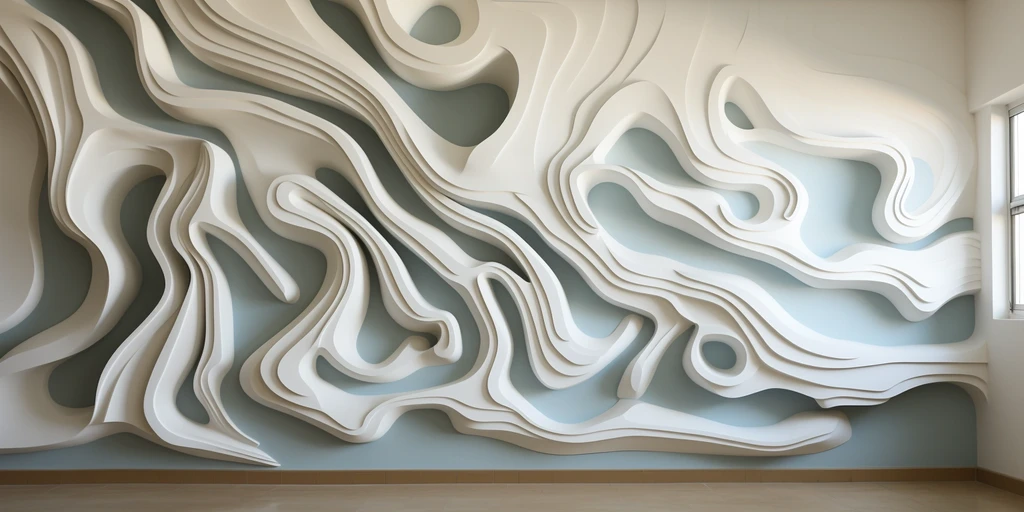Introduction
In a world overflowing with images, advertisements, and constant digital noise, minimalism in art stands out by embracing simplicity. At its core, minimalism is about stripping away the unnecessary, reducing art to its essential elements—color, form, and space. This artistic movement, which gained prominence in the 1960s, was a reaction against the complexity and emotional intensity of abstract expressionism. Instead of chaotic brushstrokes and dramatic gestures, minimalist artists sought clarity, precision, and restraint.
Minimalism is not just an art style; it is a philosophy that values less as more. By eliminating distractions, minimalism invites viewers to slow down, observe carefully, and experience the purity of form. This article explores the origins, principles, and influence of minimalism in modern art, revealing why “the power of less” continues to resonate today.
The Origins of Minimalism
Minimalism emerged in New York during the 1960s, a period of rapid cultural and artistic change. Artists such as Donald Judd, Dan Flavin, Agnes Martin, and Frank Stella rejected the personal, expressive qualities of earlier art movements. They wanted to remove the artist’s hand and emotions from the work, instead creating objects that existed as they were, without narrative or symbolism.
Minimalism was also influenced by architecture, design, and even Zen philosophy, which emphasized simplicity, balance, and harmony. The result was an art form that valued clarity and objectivity, often using industrial materials and geometric shapes.
Principles of Minimalist Art
Minimalism is built on several core principles:
- Simplicity of Form: Geometric shapes such as squares, rectangles, and lines dominate minimalist works.
- Limited Color Palette: Artists often use monochromatic or highly restricted palettes to avoid distractions.
- Repetition: Patterns, grids, and repeated forms create rhythm and balance.
- Focus on Space: Negative space becomes as important as the object itself, encouraging contemplation.
- Objectivity: Minimalist art avoids symbolism, narrative, or emotion, presenting the work as a pure visual experience.
These principles challenged audiences to rethink what art could be. Minimalism was not about telling a story or expressing feelings—it was about being present with form and space.
Key Figures in Minimalism
- Donald Judd: Known for his sleek, box-like sculptures made of metal and plexiglass, Judd emphasized clarity and precision.
- Dan Flavin: Used fluorescent light tubes to create glowing installations that transformed gallery spaces.
- Agnes Martin: Combined minimalism with subtle spirituality, using delicate grids and muted tones to evoke tranquility.
- Frank Stella: Famous for declaring, “What you see is what you see,” Stella’s paintings emphasized flatness and form.
Each artist contributed a unique perspective, but all shared a commitment to simplicity and reduction.
Minimalism Beyond the Canvas
Minimalism quickly spread beyond painting and sculpture. In architecture, it influenced buildings defined by clean lines and open spaces. In design, it shaped furniture, interiors, and fashion, where functionality and elegance merged. Even in music, composers like Steve Reich and Philip Glass embraced repetitive, pared-down structures that mirrored minimalist art.
Today, minimalism extends into digital culture, influencing web design, branding, and lifestyle movements. The appeal lies in clarity—removing clutter to highlight what truly matters.
Minimalism as Philosophy
Beyond aesthetics, minimalism represents a way of seeing the world. It encourages intentionality: doing more with less, focusing on essentials, and finding beauty in simplicity. This resonates strongly in our consumer-driven society, where excess often overwhelms meaning. Minimalism in art invites viewers to pause, reflect, and appreciate subtlety in a world addicted to spectacle.
Criticisms of Minimalism
Not everyone embraced minimalism. Critics argued it was cold, impersonal, and devoid of meaning. Some dismissed it as overly simplistic or elitist, requiring specialized knowledge to appreciate. Others accused it of reducing art to decoration.
Yet minimalism’s defenders argue that its power lies in its openness. By stripping away narrative and symbolism, minimalism allows each viewer to bring their own interpretation. The work becomes a mirror for perception itself.
Minimalism in Contemporary Art
Minimalism’s legacy remains strong in contemporary art. Many digital and installation artists draw on its principles, using space, repetition, and simplicity to engage audiences. Works by artists like Yayoi Kusama and Olafur Eliasson echo minimalist ideas while introducing new dimensions of interactivity and immersion.
Moreover, minimalism’s influence is visible in everyday culture. From sleek smartphone designs to minimalist fashion, its principles shape how we live, work, and consume.
Conclusion
Minimalism in modern art demonstrates that less can indeed be more. By focusing on essentials, it strips away the noise of excess, leaving clarity and presence. Far from being empty, minimalist works invite deep reflection, proving that simplicity can hold profound meaning.
In a fast-paced, overstimulated world, minimalism offers a pause—a chance to appreciate the quiet power of less. Whether on a gallery wall, in an architectural space, or in the rhythms of daily life, minimalism continues to show that simplicity is not emptiness but richness in its purest form.

